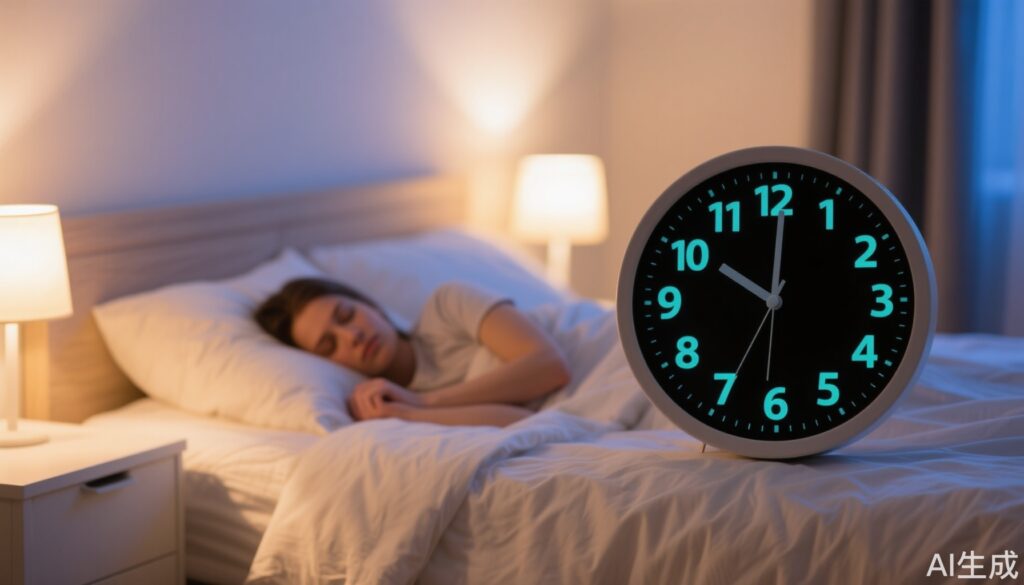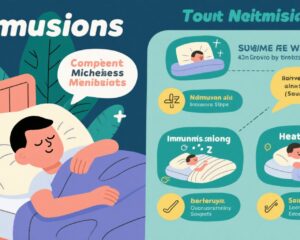Introduction
Insomnia, a widespread and persistent sleep disorder, affects a significant portion of the population globally. Clinical studies indicate that the prevalence of insomnia increases with age, with approximately 40% of individuals over 65 years experiencing symptoms. Women are more commonly affected than men, and 40% to 50% of people suffering from insomnia experience symptoms lasting at least one year. Importantly, research links chronic insomnia with heightened risks for serious health conditions including primary hypertension, stroke, type 2 diabetes, hypothyroidism, and Alzheimer’s disease. Understanding and addressing insomnia, therefore, is not only crucial for improving sleep quality but also overall health outcomes.
Are You Part of the ‘Insomnia Army’?
Before delving into common misconceptions, it’s important to assess if you might be experiencing insomnia. Here are some signs to self-check:
1. Difficulty falling asleep, taking more than 30 minutes to do so.
2. Unstable sleep: shallow sleep, frequent waking during the night more than twice with difficulty returning to sleep within 30 minutes.
3. Waking up earlier than usual by two hours or more.
4. Insufficient sleep duration, less than 5 hours for adults.
5. Feeling unrefreshed upon waking, accompanied by fatigue, poor concentration, or decreased work efficiency.
If you identify with one or more of these symptoms, you may need to consider strategies to improve your sleep and avoid common pitfalls.
Common Misconceptions About Insomnia
Insomnia is riddled with myths that can inadvertently worsen symptoms or delay proper treatment. Here are nine prevalent misunderstandings:
1. “You Must Sleep 8 Hours Every Night”
Individual sleep needs vary like appetite. While 6 to 8 hours generally suffices for most adults, overemphasizing duration can increase anxiety and paradoxically reduce sleep quality.
2. “Lying Awake in Bed Is Also Rest”
Lying awake for over 30 minutes each night can foster anxiety and negative conditioning, making the sight of the bed stressful and heightening alertness, thereby frustrating sleep efforts.
3. “Poor Night Sleep Means You Should Nap More During the Day”
Irregular napping disrupts the body’s circadian rhythm, exacerbating insomnia symptoms and impairing physiological and psychological health.
4. “The More Sleep, the Better”
Like a phone battery with fixed capacity, once your daily sleep requirement is met, additional time spent in bed does not recharge you further and may negatively affect sleep efficiency.
5. “Poor Sleep Quality in Older Adults Is Normal”
While aging generally involves lighter and shorter sleep, adequate sleep is judged by daytime function. Persistent daytime fatigue in older adults may indicate underlying sleep problems needing attention.
6. “Alcohol Helps You Sleep”
Alcohol may ease falling asleep initially but often leads to fragmented, shallow sleep later in the night, reducing overall sleep quality and burdening liver health.
7. “Waking Up at Night Means Poor Sleep”
Brief awakenings during lighter sleep phases are normal, usually forgotten by morning. Occasional night awakenings due to external factors are not cause for undue worry.
8. “Only Medication Can Fix Insomnia”
Effective treatment requires identifying causes, correcting misconceptions, and improving sleep hygiene. Medication, when necessary, should be prescribed and managed under medical supervision.
9. “Sleeping Pills Cause Addiction”
Many mistakenly believe insomnia medication leads to addiction due to worsened sleep after abrupt cessation. Gradual tapering supervised by a doctor minimizes withdrawal effects and aids proper adjustment.
Practical Strategies for Better Sleep
Instead of succumbing to myths, individuals facing insomnia can employ evidence-based methods:
1. Identify personal insomnia triggers and misconceptions.
2. Maintain a consistent sleep schedule and avoid excessive time in bed.
3. Increase outdoor exposure to natural light.
4. Engage in moderate, regular physical activity.
5. Manage stress and cultivate positive emotional health.
6. Keep a sleep diary to track patterns and improvements.
7. Seek medical advice for persistent issues; consider cognitive behavioral therapy and guided pharmacologic treatment if necessary.
Case Study: Emily’s Journey from Fatigue to Restful Nights
Emily, a 56-year-old graphic designer, struggled with falling asleep and frequent nighttime awakenings. Initially, she believed she needed to stay in bed longer to “catch up” on lost sleep and sometimes used wine to relax. After consultation with her physician, Emily learned to challenge her misconceptions: she set a regular bedtime, avoided alcohol near sleep time, and incorporated daily walks. Using a sleep diary and stress-relief techniques helped her regain control. Within weeks, Emily’s sleep quality improved, and so did her daytime energy and concentration.
Conclusion
Insomnia is a common yet complex health issue laden with widespread misconceptions. Recognizing and overturning these myths is vital for effective management. A balanced approach—combining education, lifestyle changes, and, when required, professional guidance—can significantly improve sleep quality and overall well-being. Healthcare providers and patients alike should emphasize accurate knowledge to dispel fears and promote healthy sleep habits.
References
1. American Academy of Sleep Medicine. International Classification of Sleep Disorders, 3rd Edition. Darien, IL: AASM; 2014.
2. Morin CM, Benca R. Chronic insomnia. Lancet. 2012;379(9821):1129-1141.
3. Buysse DJ. Insomnia. JAMA. 2013;309(7):706-716.
4. National Sleep Foundation. How Much Sleep Do We Really Need? 2015.
5. Zeitzer JM, et al. Effect of Alcohol on Human Sleep and Sleep EEG. Alcohol Clin Exp Res. 2018;42(11):2022-2031.
6. Riemann D, et al. European guideline for the diagnosis and treatment of insomnia. J Sleep Res. 2017;26(6):675-700.


